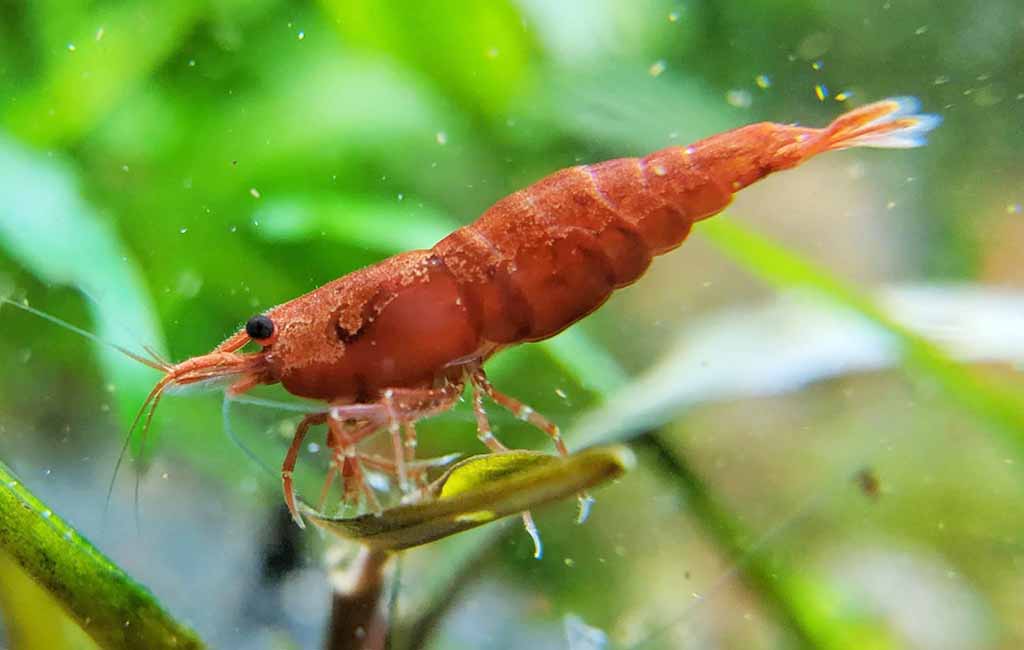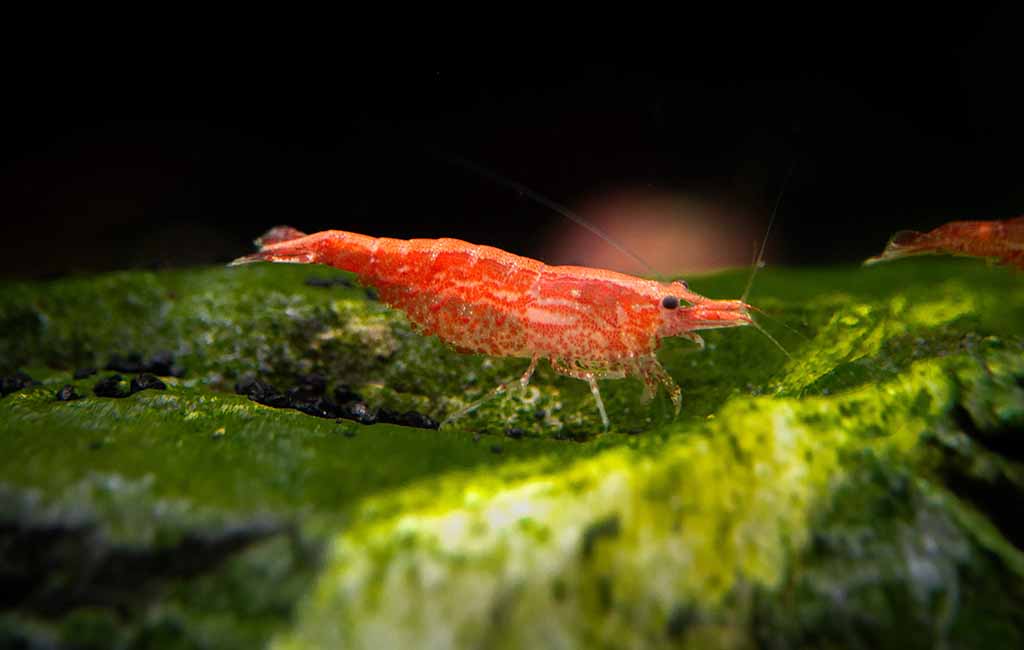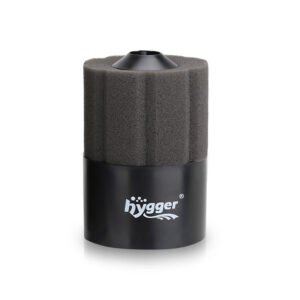Neocaridina davidi, commonly called cherry shrimp, is one of the most preferred freshwater crustaceans among aquarists. Their red color and relaxed temperament, coupled with their hardiness, make them suitable for amateur and advanced aquarists. This post will be divided into several sections, which will guide you on how to breed cherry shrimp: sexing the shrimp, the cherry shrimp breeding cycle, and the ideal environment.
Content Table
Whether you have a hobby shrimp breeder or someone who wants to grow a colony of shrimp, a good understanding of basic knowledge of cherry shrimp breeding is essential.
Male Or Female Cherry Shrimp
How can you tell if a cherry shrimp is male or female?
This is the first thing that needs to be done when aspiring to breed the cherry shrimp, and it involves separating them according to their sex. Here are some tips on how to distinguish between the two:
- Color Intensity: This is because female cherry shrimp are more colored, most commonly, a deep red. In all cases, the males were lighter or translucent.
- Size and Shape: Female larvae are larger and comparatively rounder than the male larvae. Females have an indentation underneath in which they carry their eggs, while the males are slender.
- Saddle and Eggs: Females have a distinct structure called ‘Saddle’ behind their head when they grow, this is where eggs are retained before ovulation. After they have been fertilized, the eggs go to the ventral part of the abdomen and appear to be yellow or green.
Being aware of the sex of your shrimp is beneficial in having an adequate group for breeding, too. Masculine oriented sex ratios of one male for every two or three females are optimum.

cherry shrimp breeding
Cherry Shrimp Breeding
The basic info about cherry shrimp breeding
Breeding cherry shrimp is not complicated, which is why it is well-liked among novices in shrimp breeding. The shrimp does not need to be fed food to induce breeding or the use of any hormones. They will reproduce on their own if the environmental factors are favorable for their growth.
- Maturity Age: Cherry shrimp reach sexual maturity at around 4–6 months.
- Mating Behavior: After molting, females release pheromones into the water, which attracts males. The male will then fertilize the eggs as the female carries them.
- Eggs and Hatching: The female carries 20–30 eggs under her abdomen (a condition known as being “berried”). The eggs hatch in about 2–3 weeks, depending on temperature and water quality.
You don’t need to set up a breeding tank unless you’re concerned about other fish eating the shrimp or their babies. A planted aquarium with plenty of hiding spaces is ideal for colony growth.
How Often Do Cherry Shrimp Lay Eggs?
Being small, they can breed freely under the right circumstances, and their disposal is also easy; therefore easy to maintain.
They should also keep consistent water parameters in an effort to avoid situations that may cause stress, thus lowering their breeding rates. Shrimps that are comfortable and well-fed will continue laying eggs regularly.

cherry shrimp breeding temperature
Breeding Cycle Of Cherry Shrimp
What is the breeding cycle of cherry shrimp in tanks?
The breeding cycle of cherry shrimp follows a fairly predictable pattern:
- Molting: The female molts and becomes receptive to mating.
- Mating: Males detect pheromones and fertilize the female.
- Egg Carrying (Berried): The female carries fertilized eggs for 14–21 days.
- Hatching: Eggs hatch into miniature shrimp—no larval stage required.
- Juvenile Growth: Baby shrimp grow rapidly and reach maturity in about 2–3 months.
Proper tank setup and minimal disturbances are key during each stage. Avoid introducing aggressive tank mates, and provide biofilm or algae for the juveniles to feed on once hatched.
Cherry Shrimp Breeding Temperature
The breeding temperature, water parameters, lighting, etc., for cherry shrimp.
For optimal breeding, it’s essential to maintain stable and shrimp-friendly environmental conditions.
- Temperature: The ideal cherry shrimp breeding temperature is 72–78°F (22–26°C). Slightly warmer temperatures may speed up breeding, but anything above 80°F can cause stress for them.
- pH Level: Maintain a pH between 5 and 7.5.
- GH (General Hardness): 6–8 dGH.
- KH (Carbonate Hardness): 3–6 dKH.
- Ammonia/Nitrite: Should be 0 ppm—cherry shrimp are highly sensitive to poor water quality.
- Nitrate: Below 20 ppm.
- Lighting: Moderate lighting (8–10 hours a day) is sufficient. Too much light can promote algae overgrowth, while too little may stunt plant growth.
- Plants & Hiding Places: Java moss, driftwood, and sponge filters are perfect additions. They not only provide shelter but also promote biofilm growth, which is essential for baby shrimp.
Tip: Regular water changes (around 10–15% weekly) help maintain clean, stable conditions without shocking your shrimp.
Cherry Shrimp Breeding Chart and Advice
Share the breeding chart and advice on cherry shrimp for beginners
Here’s a simple cherry shrimp breeding chart that outlines key stages and timelines:
| Stage | Description | Timeframe |
| Molting | Female sheds exoskeleton | Every 3–4 weeks |
| Mating | Males fertilize females | Within 24 hours post-molt |
| Egg Carrying | The female carries eggs under her abdomen | 14–21 days |
| Hatching | Eggs hatch into tiny shrimp | Immediate post-gestation |
| Juvenile Growth | Shrimp grow to maturity | 2–3 months |
Beginner Advice
Breeding cherry shrimp can be fun and fulfilling—but only if you set them up for success. Here’s a more in-depth look at key tips that can make a big difference for beginners:
- Start Small, But Strategically
Start with a few shrimp, about 10–15 total, of different varieties if possible – three to four males and seven to ten females – in a healthy, established cherry shrimp tank. It has to be at least 10 gallons for stability and for the colony to have room for growth in the future.
This also influences aggression and breeding success because it is desirable to take juveniles from the same batch with the stunning process.
- Choose Tankmates Carefully
While most species of shrimp are stingrays are peaceful creatures, not all fish are safe to be placed with shrimp. Most of the fish like bettas, gouramis, angelfish, and most tetra species take food favors in shrimp fry.
Choose an aquarium that is a shrimp-only tank or add harmless tank mates like Nerite snails, ramshorn snails, or Otocinclus catfish. These species will not forage for food, and they also have the benefit of cleaning the tank without the potential of causing harm.
- Feed Lightly, Feed Smart
Overfeeding leads to ammonia spikes and algae overgrowth. Instead of dumping food in daily, provide high-quality shrimp pellets, blanched vegetables (like zucchini or spinach), or Indian almond leaves every other day.
Let them graze on biofilm, which forms naturally on plants and hard surfaces—it’s their favorite food and critical for baby shrimp survival.
- Don’t Overclean the Tank
Do not thoroughly clean the tank: The use of biofilm and surface algae is an undeleted food valuable for feeding shrimp, especially when they are young. Avoid shocking the dust particles by vacuuming more frequently or replacing the filter media too often.
Instead, clean gently and sparingly. The weekly cleaning should only involve the removal of any debris and other easily recognizable decomposing plant parts.

cherry shrimp breeding chart
- Use Sponge Filters & Shrimp-Safe Equipment
Sponge filters provide gentle water circulation, and they also produce oxygen helping beneficial bacteria and biofilm to develop—perfect for shrimp breeding. Do not use high capacity hang-on-back or canister filters without a pre-filter sponge because baby shrimp might get caught in them.
- Create a Shrimp-Friendly Environment
- Add mosses like Java moss and fine-leaved plants where shrimp can hide and graze.
- Include cholla wood or driftwood to promote biofilm and provide shelter.
- Use dark substrates to encourage more vibrant coloration and help shrimp feel secure.
- Maintain Stability Above All
It is very important to maintain constant and steady water parameters than trying to achieve for the perfect water. Cherry shrimp are highly sensitive to change – changes in pH, GH, KH, or temperature can cause stress, failed molts, or death.
Choosing a dependable test kit, then testing your aquarium water once a week, and avoiding large water changes. However, it is possible to modify 10–15% once weekly using dechlorinated water with similar parameters.
- Patience Pays Off
Breeding may take a few weeks to begin, and the overall ideological breeding may take any time between a few days to months, depending on the degree of change the species or breed requires. Let your shrimp decompress and acclimate.
The babies won’t be visible after hatching, lying in the water due to the presence of plants and substrate, but with time and dedication, your colony will grow.
To Summarize
Breeding of cherry shrimp is one of the favorite activities of shrimp keeping, most especially for newbies in the area of shrimp farming. They reproduce when certain conditions are fulfilled, and require little management, while their life cycle is straightforward.
To effectively breed cherry shrimp at home, it is important to distinguish males from females, provide the correct cherry shrimp breeding temperature, and feed them regularly in a proper manner.
Don’t forget the cherry shrimp breeding chart that can help you start monitoring the cycles as your colony establishes. If the conditions are right, and you wait long enough, you will have a tank filled with little red swimmers that bring a tank to life.


Leave a comment